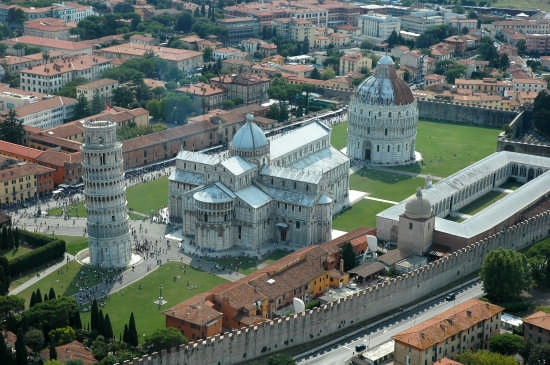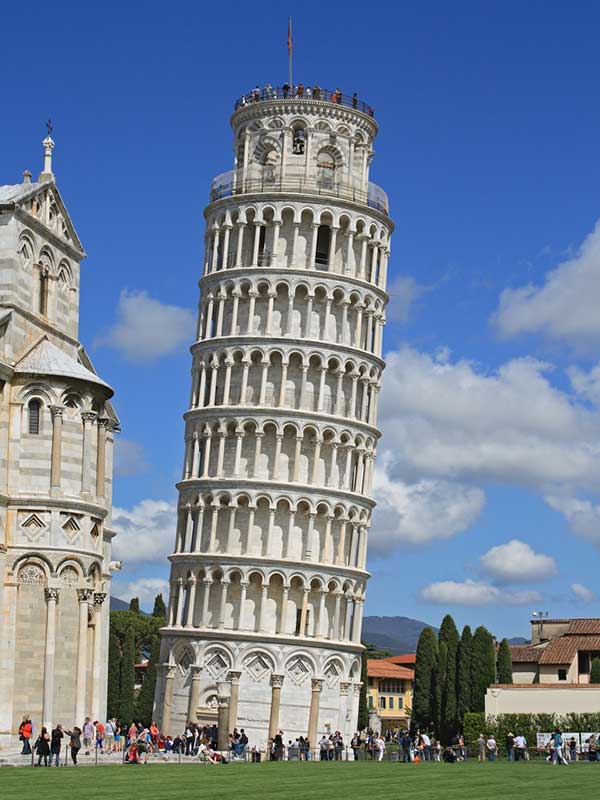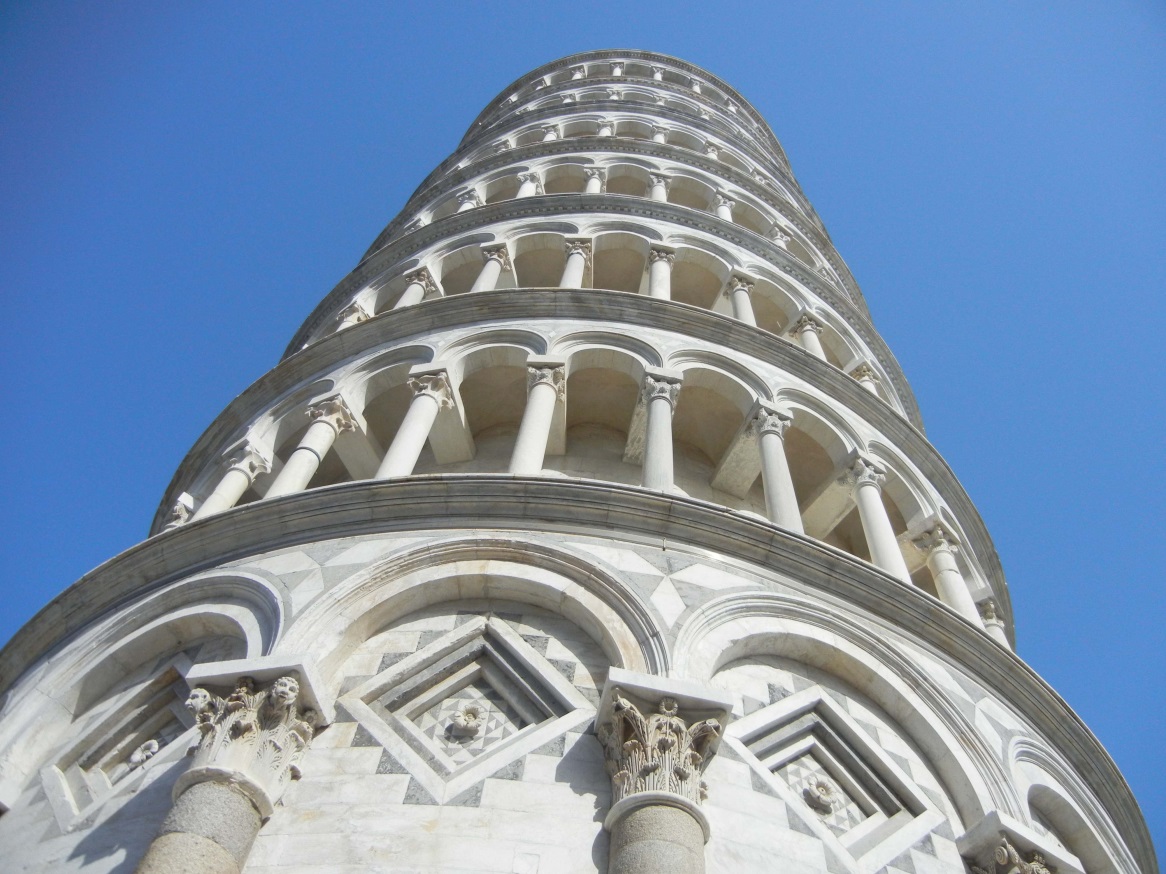
The Leaning Tower of Pisa (Italian: Torre pendente di Pisa) or simply the Tower of Pisa (Torre di Pisa) is the campanile, or freestanding bell tower, of the cathedral of the Italian city of Pisa, known worldwide for its unintended tilt.
It is situated behind the Cathedral and is the third oldest structure in Pisa’s Cathedral Square (Piazza del Duomo) after the Cathedral and the Baptistery. The tower’s tilt began during construction, caused by an inadequate foundation on ground too soft on one side to properly support the structure’s weight. The tilt increased in the decades before the structure was completed, and gradually increased until the structure was stabilized (and the tilt partially corrected) by efforts in the late 20th and early 21st centuries.
The height of the tower is 55.86 metres (183.27 feet) from the ground on the low side and 56.67 metres (185.93 feet) on the high side. The width of the walls at the base is 2.44 m (8 ft 0.06 in). Its weight is estimated at 14,500 metric tons (16,000 short tons). The tower has 296 or 294 steps; the seventh floor has two fewer steps on the north-facing staircase. Prior to restoration work performed between 1990 and 2001, the tower leaned at an angle of 5.5 degrees, but the tower now leans at about 3.99 degrees. This means that the top of the tower is displaced horizontally 3.9 metres (12 ft 10 in) from the centre.
Galileo Galilei is said to have dropped two cannonballs of different masses from the tower to demonstrate that their speed of descent was independent of their mass. However, the only primary source for this is a biography “Racconto storico della vita di Galileo”, written by Galileo’s secretary, Vincenzo Viviani, and published in 1717, long after Viviani’s death.
Numerous efforts have been made to restore the tower to a vertical orientation or at least keep it from falling over. Most of these efforts failed; some worsened the tilt. On February 27, 1964, the government of Italy requested aid in preventing the tower from toppling. It was, however, considered important to retain the current tilt, due to the role that this element played in promoting the tourism industry of Pisa.
A multinational task force of engineers, mathematicians, and historians discussed stabilisation methods. In May 2008, engineers announced that the Tower had been stabilized such that it had stopped moving for the first time in its history. They stated it would be stable for at least 200 years.
In 1987 the tower was included in the Piazza del Duomo UNESCO World Heritage Site along with the neighbouring cathedral, baptistery and cemetery.



